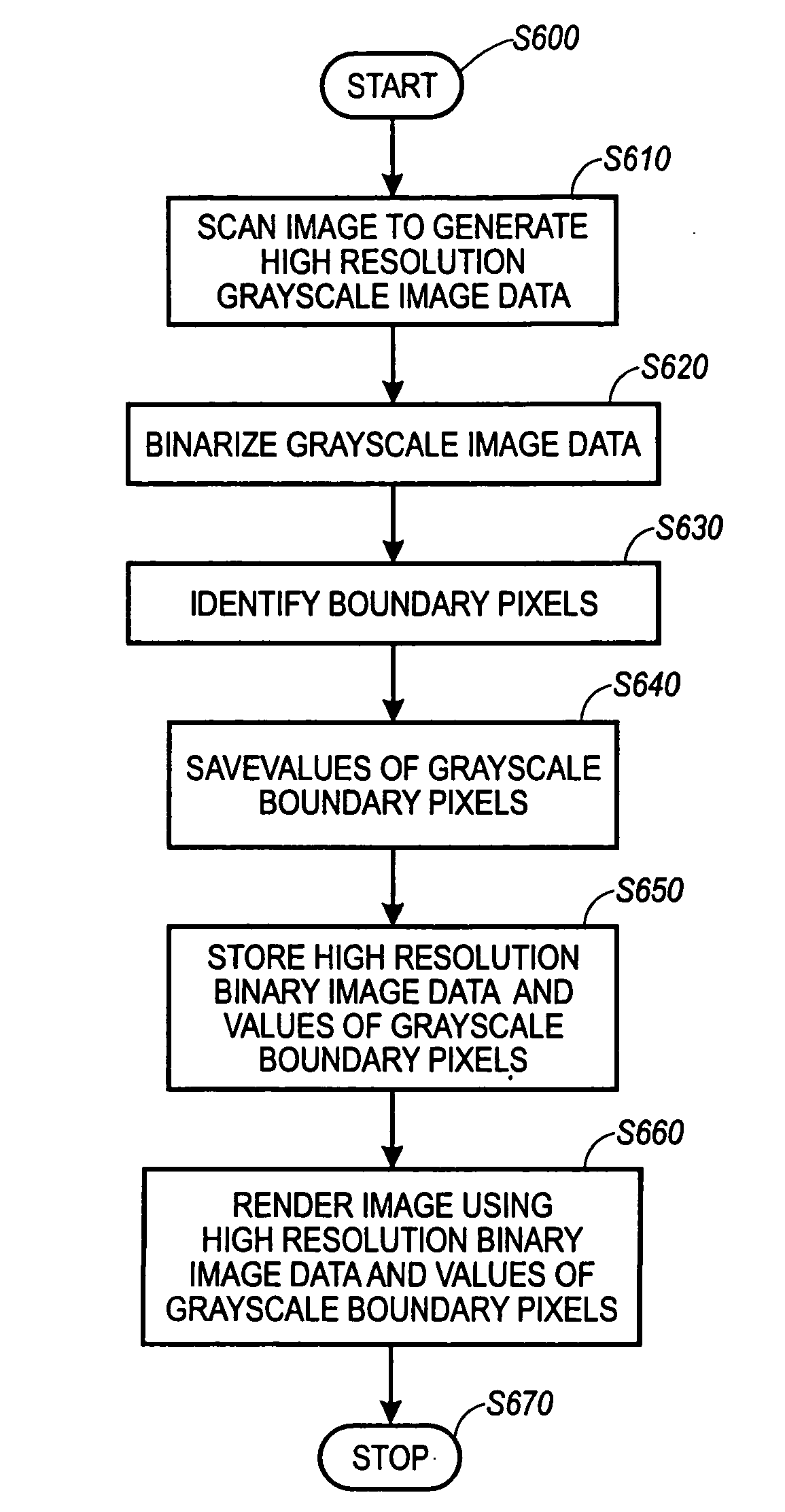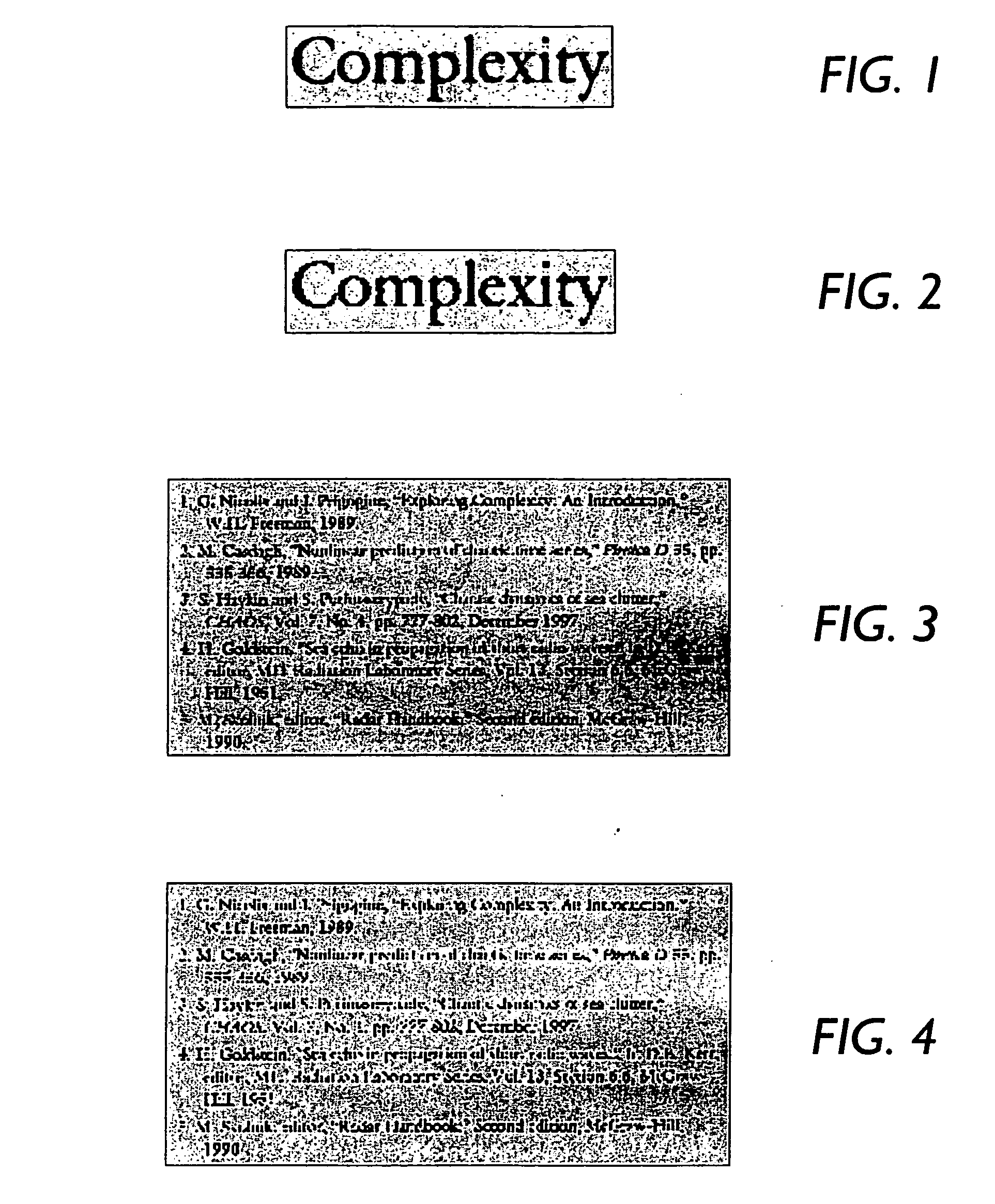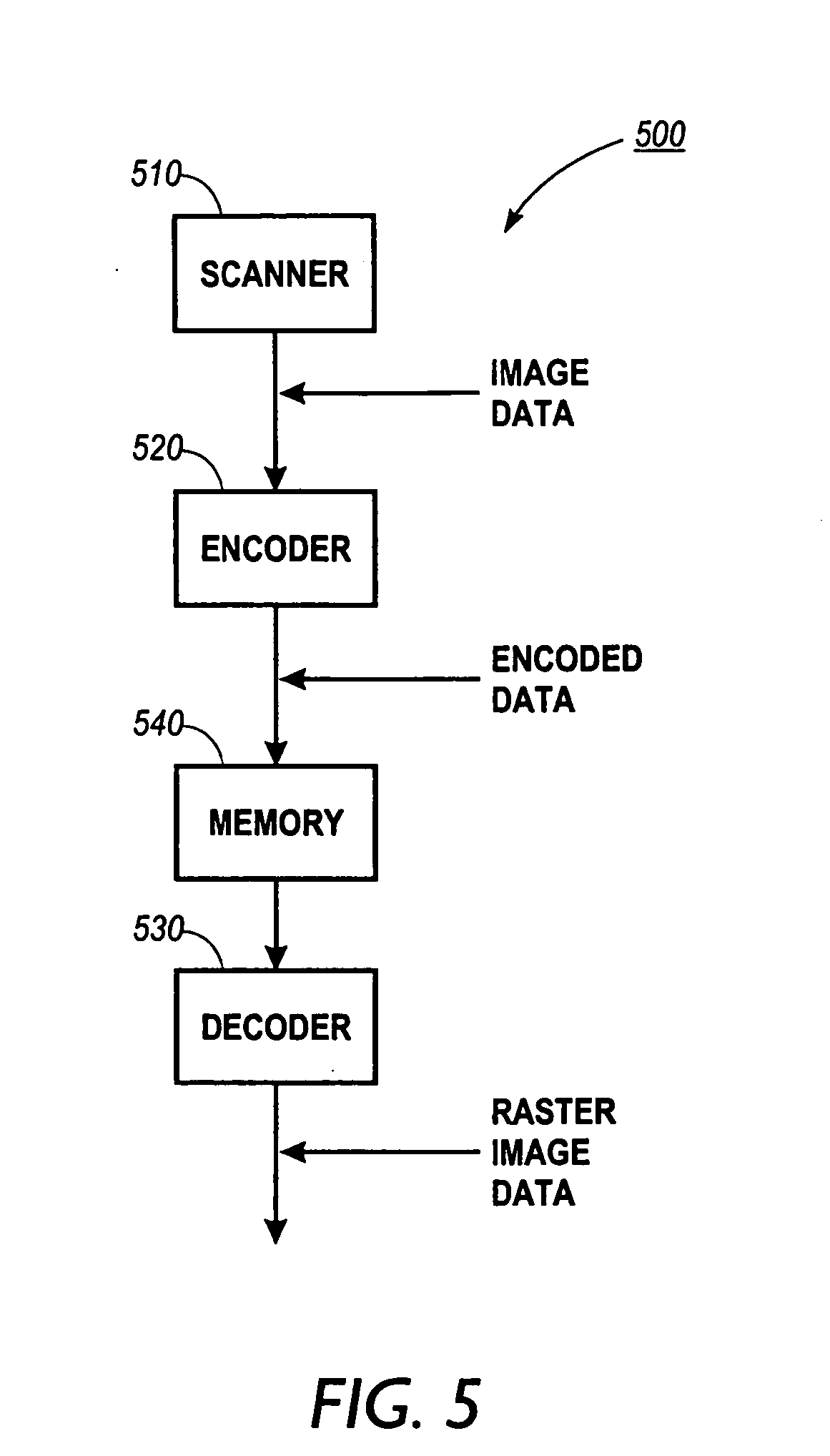Methods for generating anti-aliased text and line graphics in compressed document images
a document image and line graphics technology, applied in image enhancement, instruments, computing, etc., can solve the problems of lossy compression, small reduction in stored data, and too much data in document images for convenient on-line storage and retrieval, and achieve the effect of small incremental cost and small cost in storag
- Summary
- Abstract
- Description
- Claims
- Application Information
AI Technical Summary
Benefits of technology
Problems solved by technology
Method used
Image
Examples
fifth embodiment
[0071] In each of the exemplary embodiments except for the fifth embodiment the text or lineart mask is decomposed into two parts: interior and boundary. The interior part can be constructed from the binary text or lineart mask, by removing the ON boundary pixels, i.e., those ON pixels that are touching an OFF pixel. A morphological erosion of the single mask using a 3×3 structuring element gives a simple implementation. However, the boundary part is composed of all boundary pixels to the mask, both ON and OFF; namely, any pixel in the text or lineart mask that is adjacent, in an 8-connected sense, to a pixel of the opposite value. It is the union of (1) the pixels removed in constructing the interior part of the text or lineart mask and (2) the OFF pixels in the background that are adjacent to those boundary pixels. An implementation for construction of the boundary part performs the exclusive or operation, “XOR”, of the erosion and dilation of the text or lineart mask, with both m...
third embodiment
[0090] The third exemplary embodiment is particularly effective when it is not possible to generate a high-resolution grayscale image, from which pixels can either be selected or adapted based on the statistics of the image. In such a case, it is still possible to perform an estimate of the median pixel values on the boundaries, based on the observation that, when segregated by the number of 4-neighbors, the median pixel value varies approximately linearly with the number of 4-neighbors of opposite color. In the third embodiment, the boundary pixels are separated into interior and exterior pixels.
[0091] An approximate dependency of the boundary pixel gray value on the number of oppositely colored 4-neighbors n can be determined from median value curves, such as those in FIGS. 19 and 20, by making a linear fit to the data end points (for 0 and 4 neighbors). Therefore, for interior pixels, the pixel value for n=0 is always assumed to be a fraction, for example, 0.45, of the threshold....
PUM
 Login to View More
Login to View More Abstract
Description
Claims
Application Information
 Login to View More
Login to View More - R&D
- Intellectual Property
- Life Sciences
- Materials
- Tech Scout
- Unparalleled Data Quality
- Higher Quality Content
- 60% Fewer Hallucinations
Browse by: Latest US Patents, China's latest patents, Technical Efficacy Thesaurus, Application Domain, Technology Topic, Popular Technical Reports.
© 2025 PatSnap. All rights reserved.Legal|Privacy policy|Modern Slavery Act Transparency Statement|Sitemap|About US| Contact US: help@patsnap.com



